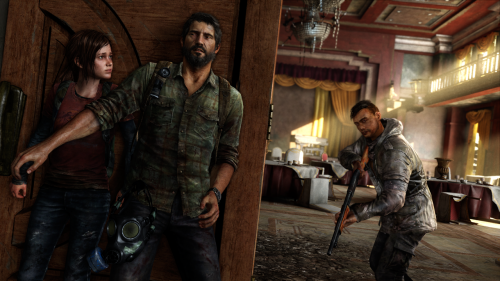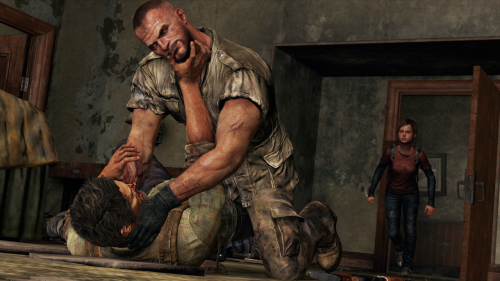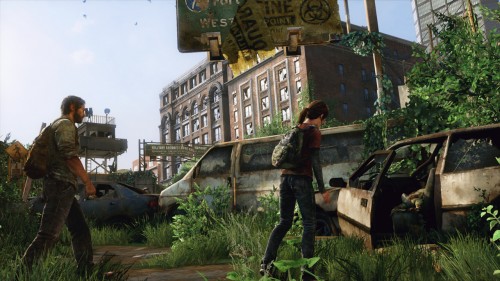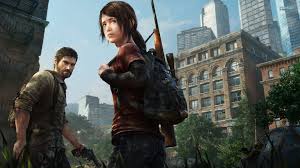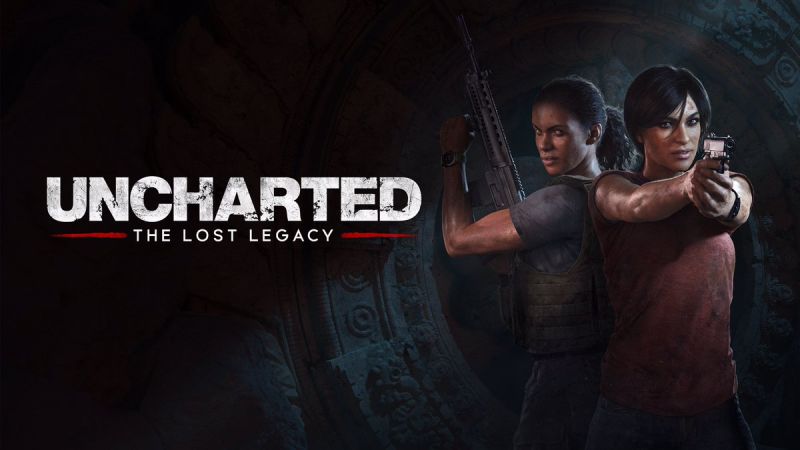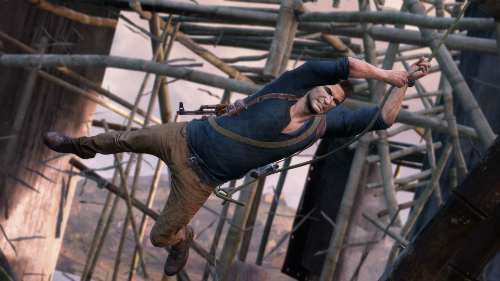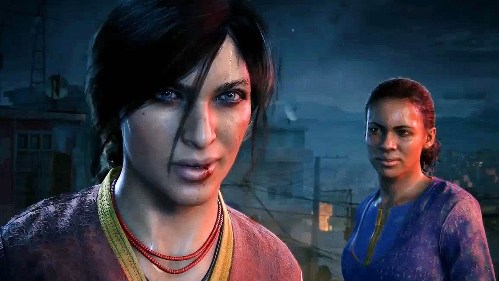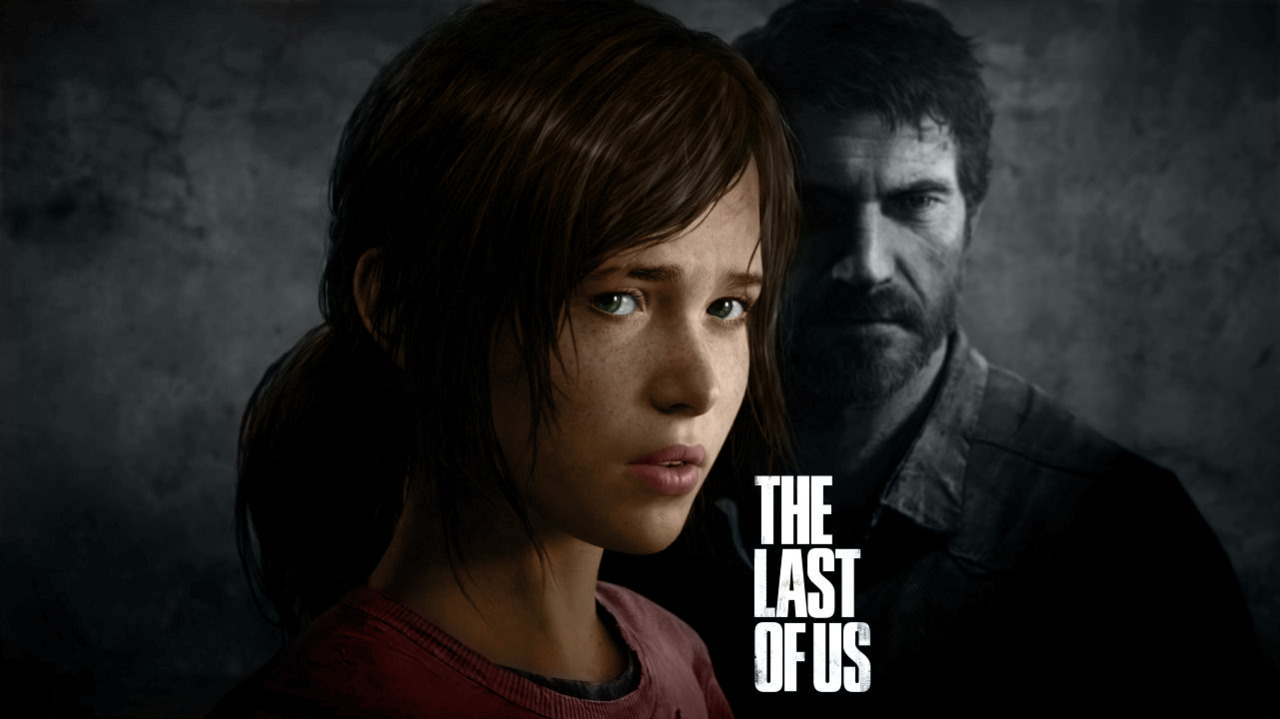
Anthony: Naughty Dog has been appropriately renamed the Naughty Gods in gaming circles with the release of PlayStation 3 exclusive and swansong The Last of Us. A typical zombie apocalypse forms the backstory, but there is nothing usual about this game. The developers have yet again proven their video game mastery, even after such hits as Uncharted and Jak and Daxter. The Last of Us not only delivers on Naughty Dog’s trademark visual splendour and solid gameplay, but with a narrative and characters that completely engage the player and push our understanding of what games can be capable of.
Jarrod: You’d be hard pressed to mistake Anthony’s gushing for my own, our tastes sharing similarities though not totally aligned. The colloquial label “Naughty Gods” is well known to me, but one I generally refrain from using. Do not be mistaken; Naughty Dog games are far from disliked, but are simply not among those that drive my lust for the medium. Uncharted is a series I like, but don’t love; perhaps that simplicity paints a more appropriate image of my perspective. That being said, and getting more to the point, of the Naughty Dog games I’ve indulged in this generation, I can comfortably claim The Last of Us stands well above all other efforts as the studio’s very best.
Anthony: Above all, The Last of Us is a triumph in story and character design. The game is beautifully written, paced and acted. After a emotional and painful opening scene introduces us to Joel, the main character, the narrative flashes forward several years. A disease has turned the majority of the world into zombies, and anyone who isn’t infected or deceased now shelters under the protection of the military in quarantine zones. Everyone has long given up finding a cure, but a rebel group known as the Fireflies deliver a young teenage girl named Ellie to Joel. Ellie has been infected with the virus, but shows no signs of mutation. The Fireflies ask Joel to escort Ellie across the United States, long since reclaimed by the wilderness, in the hope of finding a cure. So begins the player’s long and engaging adventure.
Jarrod: Naughty Dog’s understanding of characterisation and narrative is at its strongest here. The silly dissonance of Nathan Drake the murderer from Uncharted is nowhere to be found, as The Last of Us‘ portrait of a grim pandemic and its deconstruction of human life, from communities and governments to the simplicity of an individual’s battle with morality and identity, is significantly more grounded, believable, and consistent. Context is everything, and The Last of Us gives believable justification for the harshness and brutality of its setting and characters, rather than using such things as a transparent vessel for action gameplay. And though the story is wrought with a number of predictable and familiar zombie apocalypse literary tropes, and the first quarter of the game has a tendency to drag its heels, when the pace picks up (particular during the last half) it delivers in spades. Even when dealing with the familiar, The Last of Us is a mix of elegance and honesty in its storytelling, not afraid to take characters in directions that many stories would actively avoid.
Anthony: Jarrod correctly highlight’s one of the Last of Us‘ best features – it consistently feels grounded and believable. The wider narrative is expertly written and delivered, touching on themes we seldom see in games. But perhaps Naughty Dog’s greatest achievement is the characterisation of Joel and Ellie and the evolution of their relationship. Joel is scared of getting too close to Ellie, and Ellie is portrayed as vulnerable, but capable travelling companion. Over the course of the game, the dynamic between the two changes, and in parallel, players experience how Joel and Ellie eventually adapt and learn to depend on each other. We also take a front seat to the emotional challenges Joel and Ellie encounter in their taxing journey. The player directly experiences the highs and lows, so much that we feel like a vicarious extension of the video game character. The way The Last of Us digs its claws into our psyche, and how we relate to Joel and Ellie on a human level is a testament to the Naughty Dog development team.
Jarrod: That “human level” is more than a cornerstone of storytelling, and extends to an a general directive behind the game’s core design. Just as Joel, Ellie, and the rest of the case are given raw, human like qualities, so too are most of the encounters. At its heart, The Last of Us is more stealth than survival horror, drawing surprising parallels to Rockstar’s Manhunt, where each encounter is an intense kill-or-be-killed battle of flesh-against-flesh, where the not-so-simple and often shocking act of actually taking a life is a long, unforgiving struggle. The simplicity of familiar sight/sound stealth mechanics are easily understood and effectively communicated to the player through vocal AI and an emphasis on ambient audio, and what it lacks in revolutionary concepts it makes up for with intensity of simply making your way through an environment without making a sound, tossing up the risk/reward of avoiding opponents or trying to take them out. Here is where the game shines brightest, encounters where all participants are both the hunter and the hunted.
Anthony: Outside of the simple but nevertheless intense encounters with zombies and humans, each of which have different dynamics, players will spend the majority of the game exploring and managing resources. Players find items such as bandages and explosives littered about the environment and on enemy corpses. If you find enough of said items, they can be ‘crafted’ into valuable items such as med kits or nail bombs. Each item doubles as a component for two resources. For example, alcohol can be used to make health kits, or Molotov cocktails. The rarity of commodities is guaranteed to have you constantly looking for resources while juggling what to craft first. The scarcity of supplies reinforces Joel and Ellie’s journey through a ravaged and finite world. The way The Last of Us paces moments of calm with combat is also astonishing. One moment, plays may be experiencing the tranquillity of abandoned city, and the next, fighting off a horde of zombies. The gameplay transition always is flawless, again adding on the excellent narrative. Players will know what I mean once they experience the change, but the altered perspective later on is genius, and feels natural. The Last of Us took me just under 18 to complete, and after a slow start, I was stuck on the edge of my seat. I should note that I tested the faction-based multiplayer very briefly, and while a solid extension to the game, the solo campaign is deserving of the most praise.
Jarrod: On my end, the gameplay transitions were a mixed bag. The Last of Us was at its best with large, layered environments to hunt or sneak through with tactical diversity. Unfortunately The Last of Us is not immune to Uncharted syndrome, where for the sake of a set-piece we’re lead into occasionally over-scripted sequences, usually forced shoot-outs. The Last of Us appropriately opts for high damage and clumsy weapon handling for the sake of realism, but that the gunplay itself is a little one dimensional and lacking the diversity of stealth. Forced shoot-outs regress into a dull game of whack-a-mole, popping out of cover to land headshots. Finding balance between realism while avoiding tedium must have been hard, but I feel Naughty Dog played it too safe in the firearm department, as though shoot-outs aren’t Uncharted arcady, they’re still too simplistic and forgiving to stand alongside the brutal stealth and melee. There’s dissonance between the two designs; stealth/melee grounded and demanding tactical diversity, shoot-outs more stop-and-pop gamey (including trademark “shoot the helmet dude twice in the head, because reasons”), and I disliked this inconsistency.
Anthony: I personally found the ‘realistic’ edge of the shooting gameplay fair and appropriate in context. The saying that every bullet counts rings true in The Last of Us, making headshots a must. While we might be in different minds on this issue, one factor we can agree on is the game’s technical prowess. Naughty Dog build on the foundations of the Uncharted engine to deliver another beautiful game. Some of the initial environments appear bland, but once you venture into open America, the game reveals a stunning image of a world reclaimed by nature. The lighting and character animation especially immerse players in the story. The amazing production values equally carry over to the game’s sound and voice work. A sticking soundtrack highlights the lonely and hostile journey, while the voice actors portray their roles with a high degree of believability. Naughty Dogs’ method of capturing the actors’ physical actions in parallel to their vocal work combine to create authentic, engrossing performances.
Jarrod: Similar thoughts from my end. Initial visual impressions from were surprisingly negative, earlier inner-city chapters looking washed out, worsened by flat lighting, aggressive aliasing, and texture filtering that ensured anything more than two metres away appeared muddy. This, from the Uncharted team?! Thankfully the production picks around the tail end of Summer, as the overall image quality takes a turn for the sharper and defined, whisking you through an assortment of gorgeous locations with distinct visual identity. Impressive rendering does come at a cost however, the framerate annoyingly drifting between 30fps and lower, with occasional AI pop-in, giving me the impression that The Last of Us may be pushing dated PS3 hardware just a bit too hard. Similarly, unable to find a solution (like so many developers) to the AI companion problem, Naughty Dog opted to make companions almost totally undetectable by opponents. This makes sense during sneaking from a gameplay perspective, but be prepared for moments where companions run around like headless chooks in front of and into unresponsive opponents. In a game that puts such great emphasis on believable story telling and immersion, this behaviour a quite jarring. On the other hand, The Last of Us audio production is about as good as it gets, a ludicrous attention to natural sounding ambience, sombre soundtrack, punchy contacts, and outstanding voice work more or less proving Naughty Dog’s audio team is among the best in the industry.
Anthony: Naughty Dog has produced yet another gaming masterpiece, but this time one that will be remembered above all for its narrative and characters. The music, survival gameplay and stellar visuals add to the engaging tale of two humans thrown together in the most dire of circumstances. You genuinely become part of Joel and Ellie’s story, and feel every heartbeat as the pair brave a devastated world and their own inner demons. The Last of Us is a fine legacy for the PlayStation 3, and will be remembered as one of the great titles in this generation of video games.
Jarrod: For Naughty Dog, The Last of Us represents an important turn at the tail end of this generation, allowing them to break free from shackles of Uncharted scripting and linearity and instead craft a more balanced gameplay and narrative duo. The writing is smarter, the narrative themes far more cohesive with gameplay, and the gameplay itself significantly greater in mechanical diversity and application of player agency. Those heavy handed Uncharted moments do occasionally push through, as does the engine struggling against nearly seven year old hardware, but when it all comes together The Last of Us is a marvellous swansong for the PlayStation 3 era, and the most focused and ambitious project Naughty Dog has produced for the platform.
Powerful narrative | Attentive production | Intense stealth
Samey gunplay | Inconsistent framerate | Slow start

